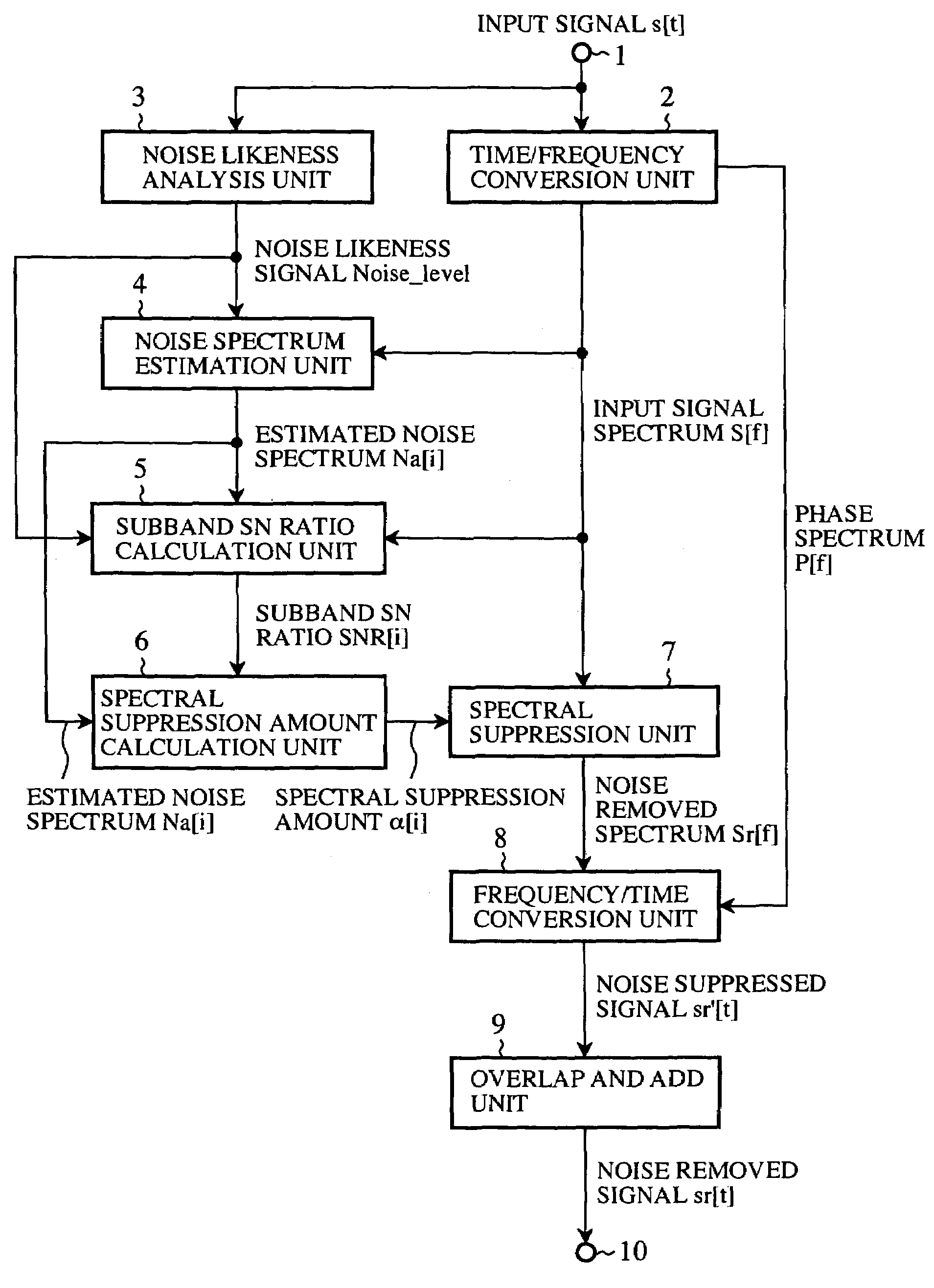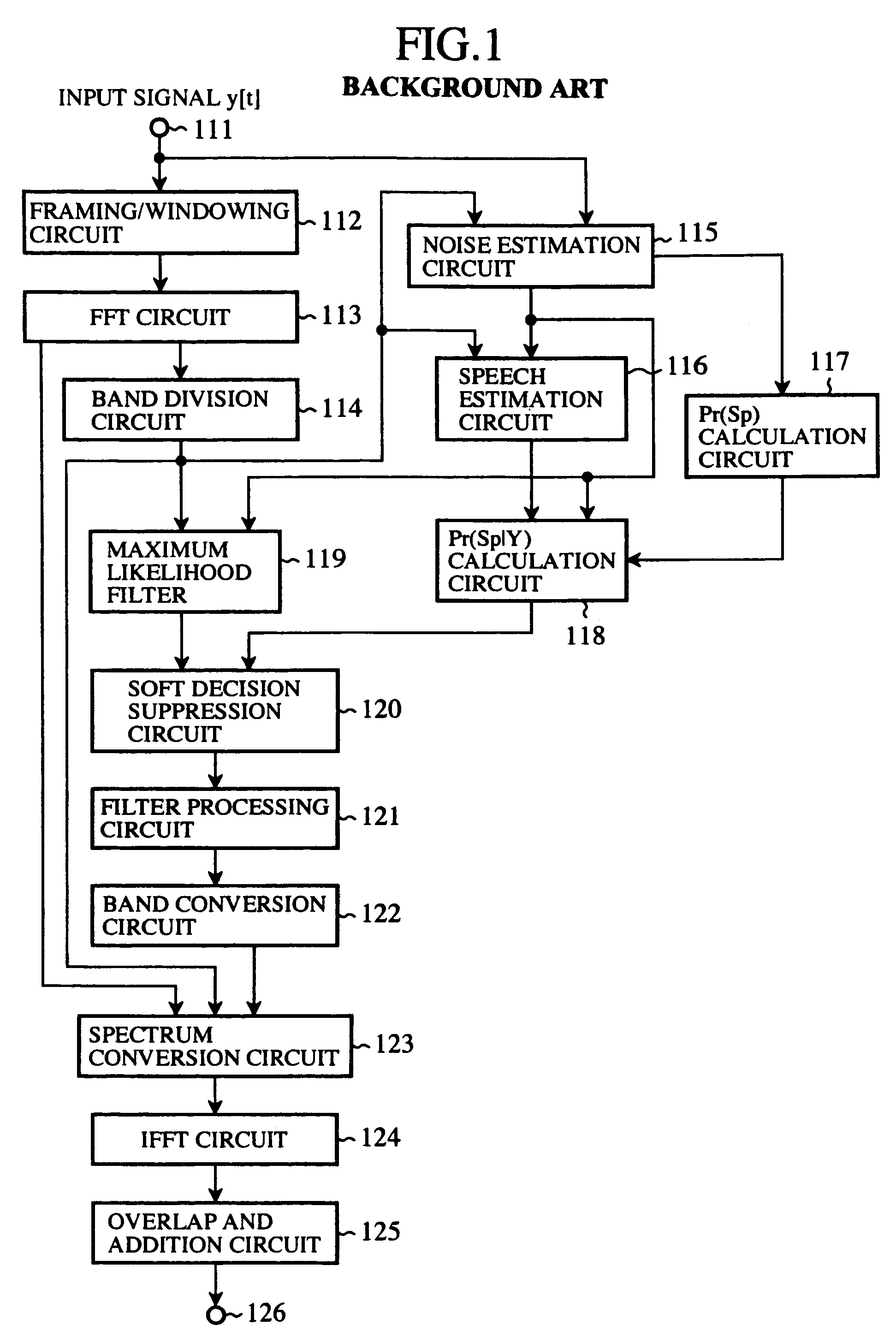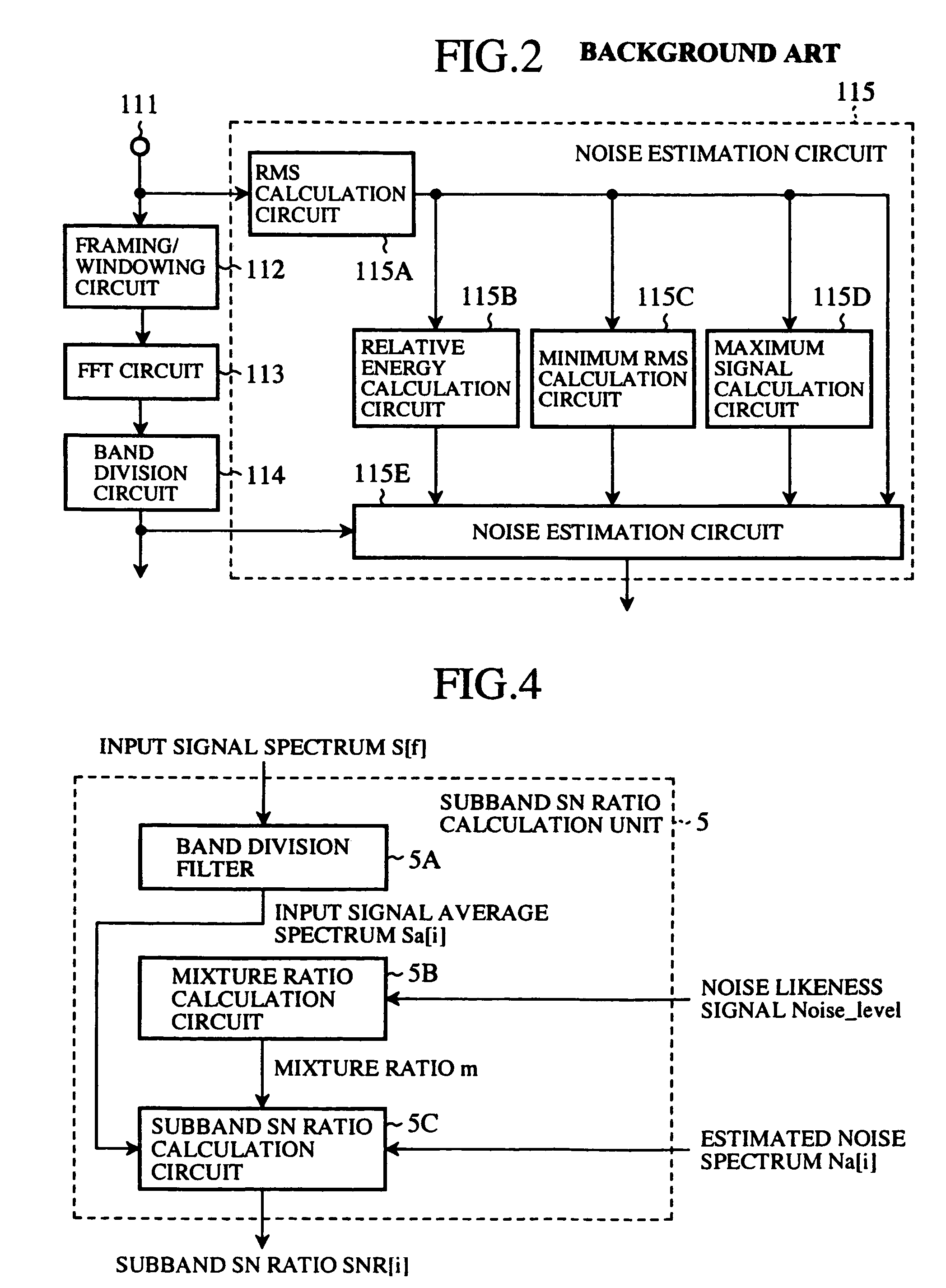Noise suppression device including subband-based signal-to-noise ratio
a noise suppression device and subband technology, applied in the direction of transducer casings/cabinets/supports, electrical transducers, instruments, etc., can solve the problems of insufficient noise suppression, inability to give a uniform amount of noise suppression along the frequency axis over the whole band, and errors in estimated subband sn ratios, etc., to achieve the effect of not degenerating the quality of acoustic output and unnecessary smoothing/lowering of sn ratio
- Summary
- Abstract
- Description
- Claims
- Application Information
AI Technical Summary
Benefits of technology
Problems solved by technology
Method used
Image
Examples
first embodiment
[0063]FIG. 3 is a block diagram showing a configuration of a noise suppression device according to a first embodiment of the present invention. In the figure, reference numeral 1 denotes an input terminal; 2 is a time / frequency conversion unit for analyzing the input signal on the frame basis and converting the input signal into an input signal spectrum and a phase spectrum; 3 is a noise likeness analysis unit for calculating a noise likeness signal, which is an index of whether an input signal frame is noise or speech; and 4 is a noise spectrum estimation unit for receiving the input signal spectrum obtained by the time / frequency conversion unit 2, and calculating the input signal average spectrum on the subband basis and updating the subband-based estimated noise spectrum estimated from past frames, on the basis of the calculated subband-based input signal average spectrum and the noise likeness signal calculated by the noise likeness analysis unit 3.
[0064]Also in FIG. 3, referenc...
second embodiment
[0106]The mixture ratio m calculated by the subband SN ratio calculation unit 5 in the first embodiment described above can be modified in such a manner that it is controlled as a subband-based mixture ratio m[i] capable of having a different value for each subband i by using, for example, a function of the noise likeness signal Noise_level.
[0107]For example, the subband-based mixture ratio m[i] can be designed to have a large value when the noise likeness signal Noise_level is large and to have a small value when the noise likeness signal Noise_level is small as determined by the following equation (18).
[0108]
m[0] = Noise_level;1.0 >= Noise_level > N_TH[0],N_TH[0] = 0.6(18)m[1] = Noise_level;1.0 >= Noise_level > N_TH[1],N_TH[1] = 0.6...m[9] = Noise_level;1.0 >= Noise_level > N_TH[9],N_TH[9] = 0.5m[10] = Noise_level;1.0 >= Noise_level > N_TH[10],N_TH[10] = 0.4m[11] = Noise_level;1.0 >= Noise_level > N_TH[11],N_TH[11] = 0.3...m[18] = Noise_level;1.0 >= Noise_level > N_TH[18],N_TH[18]...
third embodiment
[0113]In the first embodiment described above, it is possible to make the mixture ratio m have one of a plurality of predetermined values depending on the noise likeness signal in such a manner as to be indicated by the following equation (19), and to make the mixture ratio select a large value when the level of the noise likeness signal Noise_level is high and a small value when the level of the noise likeness signal is low.
[0114]m={0.99;1.0>=Noise_level>0.80.8;0.8>=Noise_level>0.60.5;0.6>=Noise_level>0.50.0;else(19)
[0115]As described above, according to the third embodiment, since the mixture ratio is set to one of a plurality of predetermined values depending on the noise likeness signal Noise_level, small fluctuations of the mixture ratio m along the time axis are accommodated to a predetermined constant value as compared with the first embodiment where the mixture ratio m is controlled as a function of the noise likeness signal Noise_level which fluctuates along the time axis. ...
PUM
 Login to View More
Login to View More Abstract
Description
Claims
Application Information
 Login to View More
Login to View More - R&D
- Intellectual Property
- Life Sciences
- Materials
- Tech Scout
- Unparalleled Data Quality
- Higher Quality Content
- 60% Fewer Hallucinations
Browse by: Latest US Patents, China's latest patents, Technical Efficacy Thesaurus, Application Domain, Technology Topic, Popular Technical Reports.
© 2025 PatSnap. All rights reserved.Legal|Privacy policy|Modern Slavery Act Transparency Statement|Sitemap|About US| Contact US: help@patsnap.com



